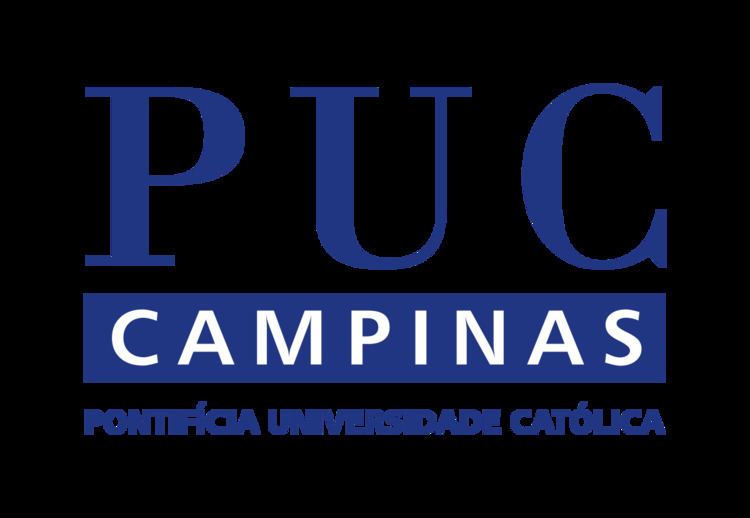Established November 21, 1941 Phone +55 19 3343-7000 Number of students 19,689 | Affiliation Roman Catholic Church Founded 7 June 1941 Academic staff 2,565 | |
 | ||
Motto in English May it shine with truth and knowledge Chancellor Angela de Mendonça Engelbrecht Address Motto Fide splendet et scientia (May it shine with truth and knowledge) Notable alumni Tite, Sandy, Paula Dolphin Similar University of Campinas, Pontifical Catholic University, Schools of Campinas, Universidade São Francisco, Sao Paulo State University | ||
Donald pucc
The Pontifical Catholic University of Campinas (Portuguese: Pontifícia Universidade Católica de Campinas, PUC-Campinas; [põtiˈfisjɐ univeɾsiˈdadʒi kaˈtɔlikɐ dʒi kɐ̃ˈpinɐs]) is a private and non-profit Catholic university, located in Campinas, the second largest city of the State of São Paulo. It is maintained by the Catholic Archdiocese of Campinas.
Founded in June 1941, with the first college teaching Philosophy, Science and Letters, it became a full university in 1955. The title of Pontifical University was granted by Pope Paul VI in 1972. The university has three campuses in the city.
The university has approximately 20,000 students enrolled in undergraduate and graduate courses. Undergraduate classes are in administration, system analysis, architecture, arts, accounting, biology, medicine, information science and library science, economics, theology, pharmacy, law, social sciences, literature, physical education, nursing, dentistry, physical therapy, speech therapy, nutrition science, engineering (civil, electrical, environmental and sanitary, computing), philosophy, geography, journalism, history, pedagogy, psychology, publicity, public relations, chemistry, social services, occupational therapy and tourism.
The Central Campus is the main building, and the Building of Arts. The university was founded in the central building in 1941.
Campus I is the largest space in PUC-Campinas, where more than 50% of students at the university study and where the Rectory is located. The land of campus I was donated by sisters Vera and Ana Beatriz, daughter of agronomist Caio Guimarães Pinto, former owner of the Santa Candida Farm. Guimaraes had a dream to build a university. The construction of the buildings began when the land was donated in 1970. Three years later, the Institute of Arts, Communications and Tourism (IACT) and the School of Physical Education (FAEF) became operational. The campus was opened in 1976.
The schools are Centre for Economics and Business Administration (CEA), Centre for Mathematical Sciences, Environmental and Technology (CEATEC), Centre for Applied Social and Human Sciences (CCHSA), except Law, and Centre for Language and Communication (CLC).
Campus II is named "Centro de Ciências da Vida" (Centre for Life Sciences) and it is known as the "Health City." It has this name because all of the university's courses are gathered there. The CCV's courses comprise the following colleges: Biologic Sciences, Pharmacy, Nursing, Physiotherapy, Speech Therapy, Medicine, Nutrition, Dentistry, Psychology and Occupational Therapy. The CCV has 33 laboratories, pharmacy school, outpatient services of physiotherapy and occupational therapy, speech therapy clinics, dental and physiotherapy services.
On the same campus is also located the Celso Pierro Hospital and Maternity (HMCP), which has 350 beds and 35 medical specialties. Every year, 450 thousand patients are treated by the Unified Health System (SUS). In Brazil, PUC-Campinas and University of São Paulo are the best in Health.
The Celso Pierro Hospital has 340 beds, 240 for the covenant of the Unified Health System (SUS) and 100 for HMOs and private individuals distributed in inpatient units, emergency rooms adult, child, gynecology/obstetrics and orthopedics, and Intensive Care Units (ICU) adult, pediatric and neonatal coronary.
